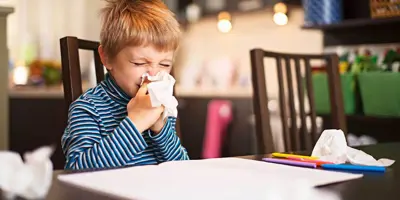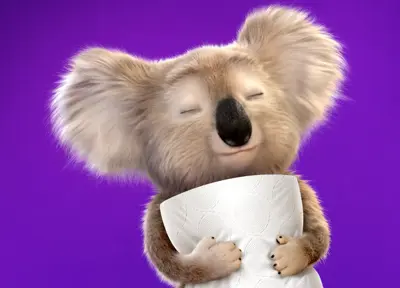10 people found this helpful

Spring and summer beckon in sunny days, blooming flowers… and kids hay fever. Children love running around in fields and parks when the weather gets warmer, but for the hay fever toddler or child this can have side effects. Knowing how to treat hay fever in children and how to tell if your baby has hay fever will help you relieve their discomfort quickly and let them enjoy the summer to its fullest.
Keeping a packet of tissues to hand is always a good idea – especially when you know that runny noses are on the cards. Cushelle tissues are strong, but they’re also incredibly soft.
Hay fever symptoms in babies and younger children
Hay fever toddler and younger kids’ symptoms can be hard to identify, as they might not be able to describe them properly. When it comes to hay fever in toddlers, symptoms like these are worth looking out for: sneezing, have a runny nose, or seem to have itchy and irritated eyes, but don’t appear to have a cold. Hay fever is rare in children under five however; if your baby is sneezing the cause is more likely to be a cold.
Children’s hay fever relief
Usually the most effective relief for hay fever and pollen allergy in children is to use medicine from the pharmacy or prescribed from the doctor. Antihistamines comes in many forms, from syrups to nasal sprays, and are very effective against hay fever. Toddlers need gentler remedies, so be sure to talk to the pharmacist or doctor first when trying to find the right medicine for hay fever in young children. Always check the dosage instructions on the packet as children’s hay fever relief generally requires less than adults and consult your doctor if you’re unsure.
Relieving symptoms of pollen allergy in children naturally
Hay fever symptoms in babies and children can also be relieved without going to the pharmacy if you prefer, especially if they are mild. A strong, soft tissue like Cushelle soaked in cold water can go a long way: use it to soothe irritated eyes and to wipe invisible pollen traces off hands and faces when they come in from playing outside.
Natural remedies can also be soothing: try relieving the symptoms of hay fever in young children by applying aloe vera gel to a soft tissue and placing it over their eyelids. Onions are also full of natural antihistamines: adding a little raw red onion to salads or dinners could help treat hay fever in children naturally. This can also help alleviate hay fever in toddlers’ symptoms, if you can get them to eat the onion.
Also, prevention is better than cure: it’s often possible to avoid flare-ups of pollen allergy in children, even in the summer. With kids hay fever, avoiding places where pollen counts are high can make a big difference, so opt for days out to the seaside rather than rural areas. The worst times for flying pollen are the early morning and the evening, so staying inside with the windows closed during these times could also help.
Related articles
What Causes Puffy Eyes? Causes and Treatments
Looking for a swollen eye allergy treatment? Need to know what to do for swollen eyes? Try our list of swollen eye allergy home remedy ideas.
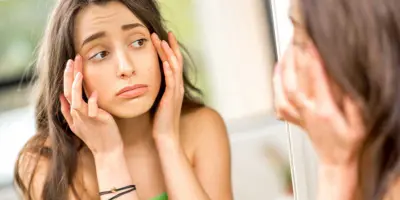
7 pollen-proof hay fever remedies
Tired of itchy eyes and runny noses? Read on if you’re looking for natural remedies to get rid of hay fever. From herbs to honey, we have a range of solutions!
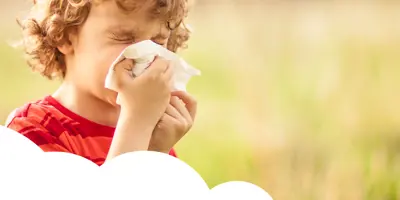
5 natural and herbal remedies for hay fever to try at home
Want to know how to treat a pollen allergy at home? Discover five options, from herbal teas and steaming to herbal remedies for hay fever relief, here.
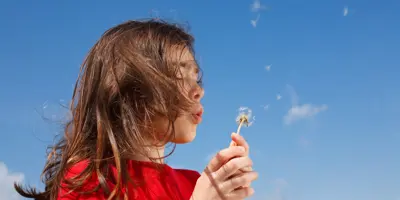
The best home remedy for wasp stings and bee stings
Read on to learn from Cushelle what to do in case of a wasp or bee sting. Find out the right way to remove the stinger, how to relieve the symptoms and when to call a doctor.

Home remedies for mosquito bites that will help relieve itching
What helps mosquito bites? There are all sorts of home remedies for itchy bites and stings. Read our guide to how to treat mosquito bites at home.
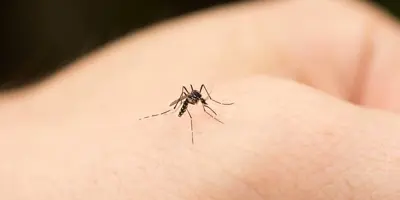
Runny nose remedies: 6 ways to stop a runny nose
Looking for a runny nose remedy you can make at home? For five family-friendly ways to stop a runny nose, click here.
